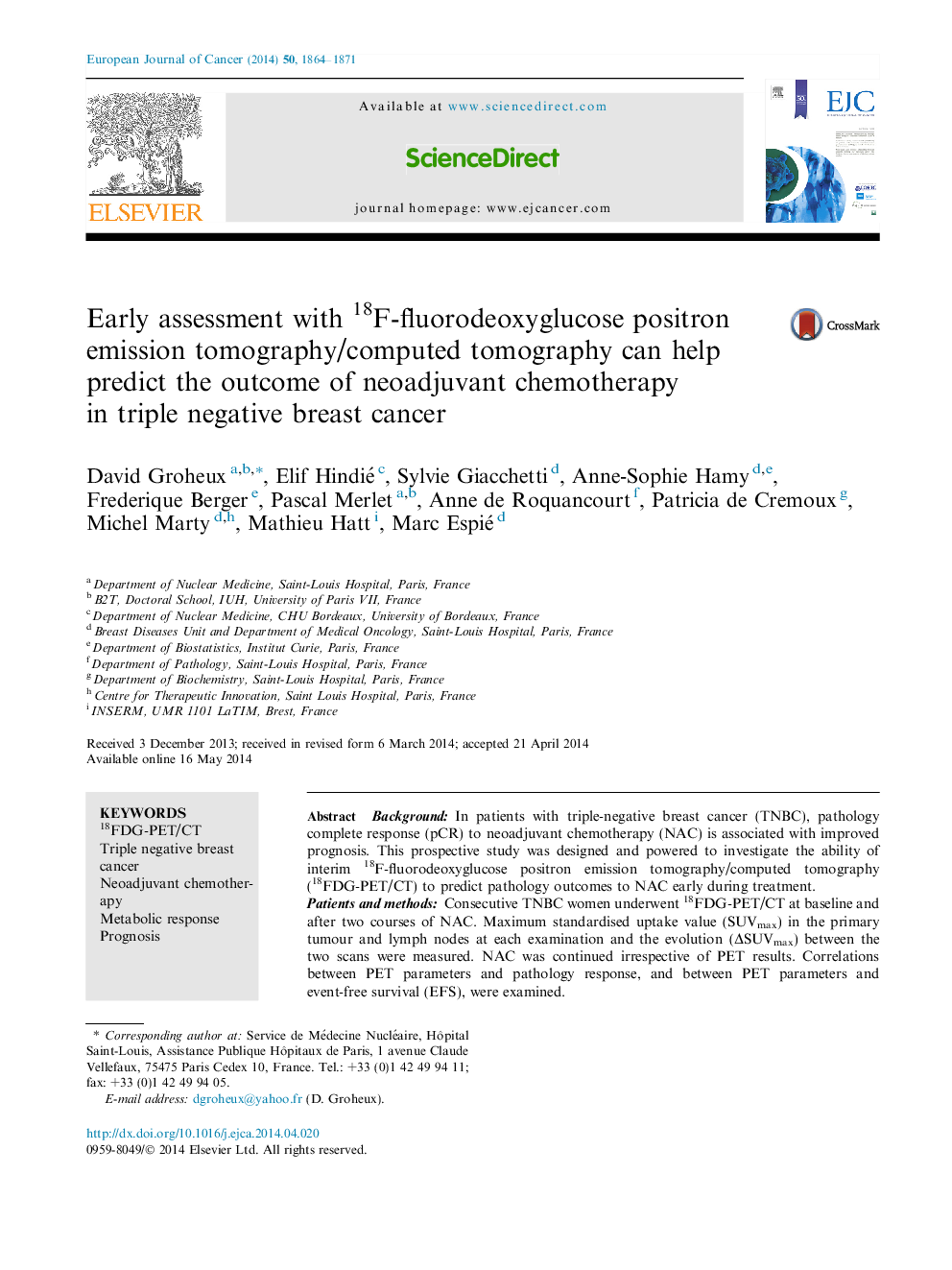| کد مقاله | کد نشریه | سال انتشار | مقاله انگلیسی | نسخه تمام متن |
|---|---|---|---|---|
| 2122011 | 1547117 | 2014 | 8 صفحه PDF | دانلود رایگان |

BackgroundIn patients with triple-negative breast cancer (TNBC), pathology complete response (pCR) to neoadjuvant chemotherapy (NAC) is associated with improved prognosis. This prospective study was designed and powered to investigate the ability of interim 18F-fluorodeoxyglucose positron emission tomography/computed tomography (18FDG-PET/CT) to predict pathology outcomes to NAC early during treatment.Patients and methodsConsecutive TNBC women underwent 18FDG-PET/CT at baseline and after two courses of NAC. Maximum standardised uptake value (SUVmax) in the primary tumour and lymph nodes at each examination and the evolution (ΔSUVmax) between the two scans were measured. NAC was continued irrespective of PET results. Correlations between PET parameters and pathology response, and between PET parameters and event-free survival (EFS), were examined.ResultsFifty patients without distant metastases were enroled. At completion of NAC, surgery showed pCR in 19 patients, while 31 had residual tumour. Mean follow-up was 30.3 months. Thirteen patients, all with residual tumour, experienced relapse. Of all assessed clinical, biological and PET parameters, ΔSUVmax in the primary tumour was the most predictive of pathology results (p < 0.0001; Mann–Whitney-U test) and EFS (p = 0.02; log rank test). A threshold of 42% decrease in SUV was identified because it offered the best accuracy in predicting EFS. There were 32 metabolic responders (⩾42% decrease in SUVmax) and 18 non-responders. Within responders, the pCR rate was 59% and the 3-year EFS 77.5%. In non-responders, the pCR rate was 0% and the 3-year EFS 47.1%.ConclusionInterim 18FDG can early predict the inefficacy of NAC in TNBC patients. It shows promise as a potential contributory biomarker in these patients.
Journal: European Journal of Cancer - Volume 50, Issue 11, July 2014, Pages 1864–1871